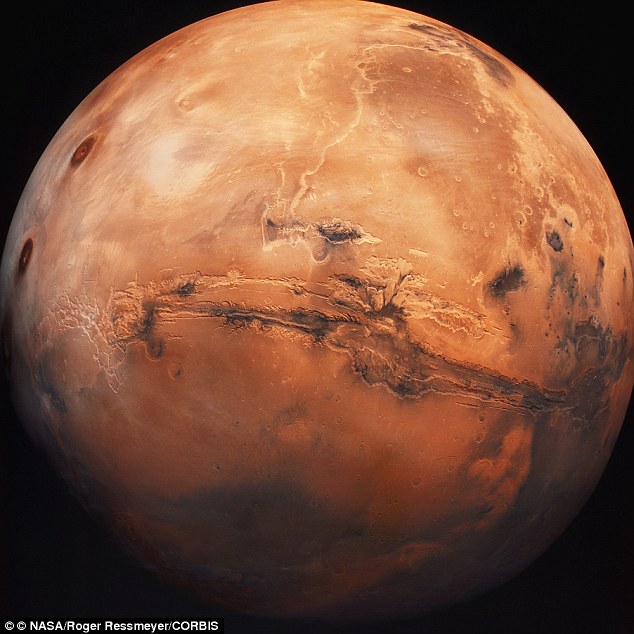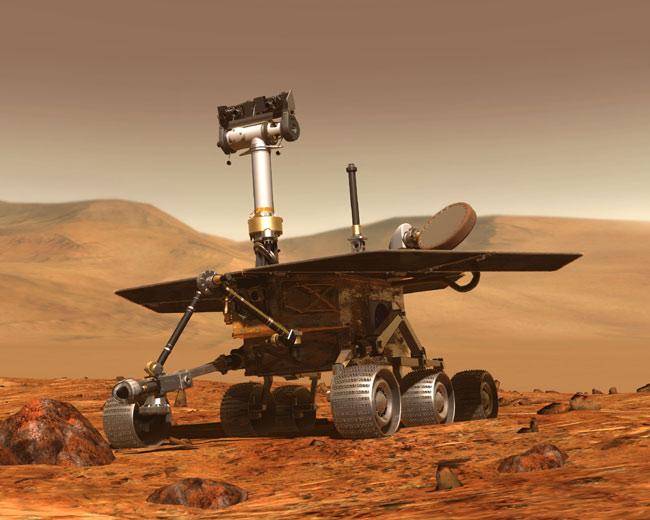Why Mars?
“The planet Mars is a world of breathtaking scenery, with spectacular mountains three times as tall as Mount Everest, canyons three times as deep and five times as long as the Grand canyon, vast ice fields, and thousands of kilometres of mysterious dry riverbeds. Its unexplored surface may hold unimagined riches and resources for future humanity, as well as answers to some of the deepest philosophical questions….Mars may someday provide a home for a dynamic new branch of human civilization, a new frontier, whose settlement and growth will provide an engine of progress for all humanity for generations to come. But all that Mars holds will forever remain beyond our grasp unless and until men and women walk its rugged landscapes.” The Case for Mars; Robert Zubrin (p 1)
In his bestselling book, published in 1996, Robert Zubrin, chairman of the National Space Society and founder of the Mars Society, made a compelling case to settle on Mars. Of course that is easier said than done!
Mars Direct
Zubrin was frustrated by the incredibly expensive Mars exploratory missions proposed by NASA in 1989 in its famous “90-Day Report”, which he called “The Death Star” (the proposal asked for $450 B USD to get to Mars!!!). He called the technology and industrial facilities that would have been required to make the mission happen “The Parallel Universe”.
As a response to the unfeasible plan, he helped engineer a mission proposal called “Mars Direct”, which (he said) would dramatically lower the cost of sending settlers to Mars, by using in-situ resource utilization (ISRU). This basically means living off the land. The Martian atmosphere would be used to seed oxygen, water, and hydrogen resources for the colony. The colonists themselves would live in inflatable shelters buried in the Martian regolith to protect them from debris, radiation, and other environmental hazards.
Ships would be sent to Mars before the colonists arrived with supplies, ensuring that they had everything they need before their arrival.The cost of Mars Direct he estimated at about $30 B in 1996 dollars.
Robert Zubrin was (still is?) a fan of government missions and didn’t believe private groups could colonize Mars alone. In Paula Berinstein’s opinion: “For a long time I thought Zubrin was wrong about advocating Mars as a government project…But now that I know something about how the aviation industry got going, I’m doubting my former conclusion…How could we possibly setup a multinational settlement on Mars and make it work?” p 191 to 192.
Red Planet on Earth
In order to raise awareness and help lobby for the case for Mars, Robert Zubrin helped found the Mars Society foundation, which is the largest Mars advocacy group in the world. The stated purpose of the Mars Society is to:
“further the exploration and settlement of the Red Planet. We will accomplish this through:
- Public outreach fostering Mars pioneers
- Worldwide support for government-funded Mars research and exploration
- Private-enterprise Mars exploration and settlement
- Starting small, with hitchhiker payloads on government-funded missions, we intend to use the credibility
- such activities engenders to mobilize larger resources, further enabling private robotic missions and
- ultimately human exploration and settlement of Mars.”
To further their goals, the Mars Society has setup experimental bases on Earth, to represent colonization activities on Mars. The Flashline Mars Arctic Research Station (FMARS) is a unique Mars exploration analog research facility established in 2000, and located on Devon Island in Nunavut, Canada. It has also setup the Mars Desert Research Station (MDRS) in Utah.
Recently Space.com contributing writer Elizabeth Howell (@HowellSpace) participated in Crew 133 at MDRS on the Mock Mars Mission, and filed these stories on what it might mean to be an actual Mars explorer (as near as we can tell).
Mars-500
The Mars-500 mission was a multi-year experiment conducted between 2007 and 2011 by Russia, the European Space Agency and China. They wanted to see how volunteers in a closed environment could adapt, socialize, and endure, while performing sample mission tasks that would simulate a manned spaceflight to the Red Planet.
Three different crews of volunteers lived and worked in a mock spacecraft in Russia during the period of the experiment. The final 520 day “mission” included a multinational crew including professionals with experience in fields such as engineering, medicine, biology, and human spaceflight.
The experiment was an interesting one, and not without its controversy or drama. First of all, over 6,000 people volunteered to take part in the final, 520-day mission. No women were included in the longer missions, to avoid sexual tension. How realistic or important this fact will be for future, actual missions remains to be seen.
Four of the six members of the final crew had significant trouble sleeping, while some exhibited signs of a kind of hibernation behaviour. Again, whether this experiment foreshadows mental or emotional health issues for future crew members travelling to Mars is an open question.
This mission has already raised a number of interesting questions and challenges, and hopefully the lessons learned can be put to good use in the future.
Mars One
In 2024, Mars One intends on launching four carefully selected applicants in a Mars-bound spaceflight to become the first residents on Mars, to be joined by eventually up to 20 others. The crew’s journey will be documented for a reality television program that will broadcast the expedition in real time.
The group has proposed the following plan:
- July 2015: The astronaut selection process will be completed; chosen candidates will form six teams of four.
- The first supply mission will be launched in a SpaceX Falcon Heavy rocket in January 2018
- 2018: An exploration vehicle may be included in that launch to assist in selecting the location of the settlement. Lockheed Martin and Surrey Satellite Technology have been contracted to plan a 2018 demonstration mission as a proof of concept for a subset of the key technologies for a later permanent human settlement on Mars.
- 2021: Six additional Dragon capsules and another rover will launch with two living units, two life support units and two supply units. This is a variation of the plan Robert Zubrin first proposed in the “Case For Mars”.
- 2022: A SpaceX Falcon Heavy rocket will launch with the first group of four colonists.
- 2025: The first colonists will arrive on Mars in a SpaceX Dragon capsule.
- 2027: A second group of four colonists will arrive.
- 2029, 2031, 2033, 2035: four more colonists will arrive each year until there are 20
Mars One hopes to raise funding in a variety of ways:
- Exclusive partnerships
- Sponsorships
- Sales of broadcasting rights
- Involvement with high net worth individuals
- Revenues from Intellectual Property
- Crowdfunding
Check out their video – “One Way Astronaut”:
How feasible is this plan?
Opinions are divided. First, Mars One has aggressive timelines and needs lots of private funding to complete the mission. That makes it less likely. As well, it plans to use Falcon Heavy rockets and Dragon capsules provided by Space X to send the participants – but no deal has been reached yet. A crowd-funding campaign has launched but has not yet met its original benchmark goal.
Robert Zubrin said: “I don’t think the business plan closes it. We’re going to go to Mars, we need a billion dollars, and we’re going to make up the revenue with advertising and media rights and so on. You might be able to make up some of the money that way, but I don’t think that anyone who is interested in making money is going to invest on that basis — invest in this really risky proposition, and if you’re lucky you’ll break even? That doesn’t fly.”
Set against the tight timelines and possible financing issues, is the fact that this is actually a logical plan. It’s got some well-known advocates like Esther Dyson and Dr. Zubrin himself (in fact it seems to be based on his Mars Direct blueprint), and it is happening at a time when private companies like SpaceX can potentially provide the required technologies. It is already attracting worldwide attention, has over 200,000 applicants (some of whom will be serious and viable astronaut candidates), and has raised over $200,000 in donations so far. Mars One has also contracted reputable firms to carry out feasibility studies.
I think the key to this mission will be to keep chipping away at the milestones. So far Mars One seems to be on track to its stated goals but it is still very early and this is an incredibly ambitious mission. So if I were a Magic 8-ball I would tentatively say “Signs point to yes”.
A Real Life Tony Stark
“I want to go to Mars.” So says Elon Musk (@ElonMusk on Twitter), the man the Guardian calls “a real life Tony Stark“.
The Dragon capsule ships which the Mars One project is relying on to ship its colonists to Mars, were built by the Paypal founder’s spaceship company SpaceX. We’ll be covering them later in this series. The fact that Mars One’s success seems to hinge on whether it can lease his rockets demonstrates the growing importance of SpaceX to this kind of longterm space exploration by private groups.
Musk would like to see a colony of 80,000 people on Mars. “The key thing for me is to develop the technology to transport large numbers of people and cargo to Mars. That’s the ultimate awesome thing.” He also believes, as does Dr. Zubrin, that only the quick, 3-month journey to Mars (every 2 years) can lead to a succesful colonization.
What is most interesting about him, apart from the fact that he has a proven track record for building the things he talks about, and actually owns a rocket company – which instantly makes him the most credible person talking about Mars settlement – is that his vision of colonization is epic in scale.
He speaks about not only creating a colony of 80,000 Martian citizens (in some interviews he says millions), but custom-designing biological adapations for these humans or their plants and pets, to make them more suited to Mars. He also feels the key point to get Mars colonization going is to reduce the cost to about $500,000 per colonist, at which point economic drivers make it inevitable.
This guy is not guilty of thinking small.
I believe that grand vision actually makes him more credible on this subject, since Mars colonization is like nothing Humanity has ever done before and so the plans we make should not seem like “business as usual”. The fact that he is able to think big and work towards his visions means he will probably impact the future of Mars in some way.
Check him out on the “Colonizing Mars: The Future Belongs to SpaceX and Elon Musk” video:
So, Is Mars Happening?
It’s very slow going, because the journey to Mars is quite literally the most complicated, dangerous, expensive expedition humanity has ever launched. However in the 11 years since “Making Space Happen” was published, the following progress has been achieved:
- Mars Society’s research initiatives
- Mars-500 – the Russian Mars experiment
- Mars One mission
- SpaceX rockets
With all the visible progress that is occurring, the Red Planet seems closer than ever before.
This is the third part of an ongoing series reviewing the book “Making Space Happen: Private Space Ventures and the Visionaries Behind Them” (2002), and looking at the achievements in the private space sector that have happened in the subsequent 11 years. I cover the following:
- “Is Space Tourism Happening?”
- Ansari X Prize
- Voyage to Mars
- Return to the Moon
- NASA
- Mining in space
- Space Entrepreneurship and private rocket companies
- Marketing, Funding, Law and Insurance issues
Next time: Return to the Moon!
What do you think? Is Mars happening?






[…] Journey to Mars […]